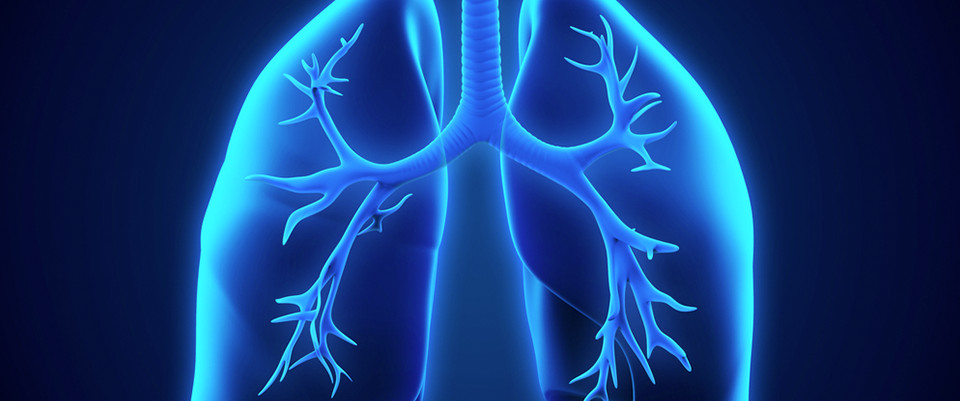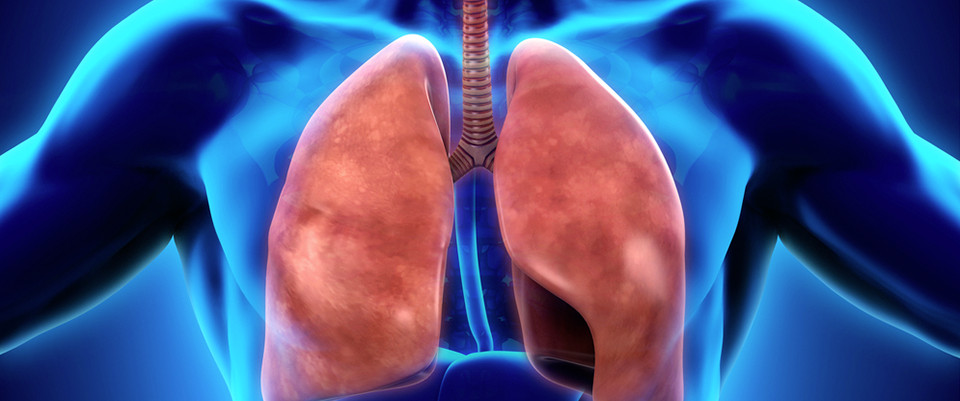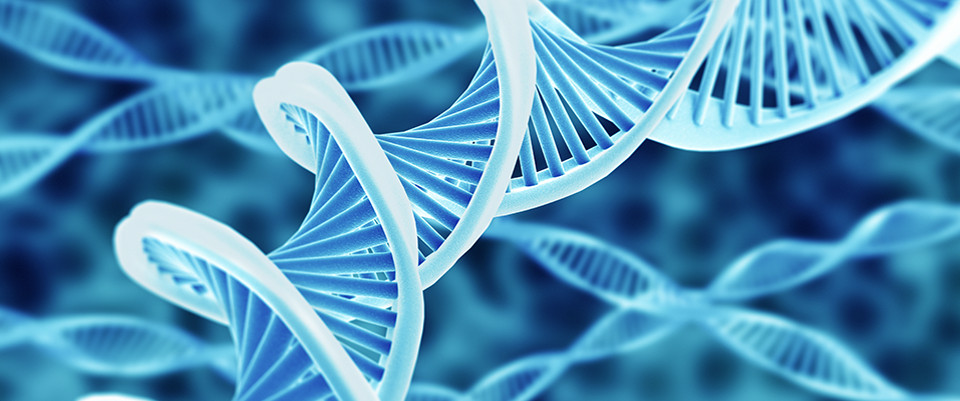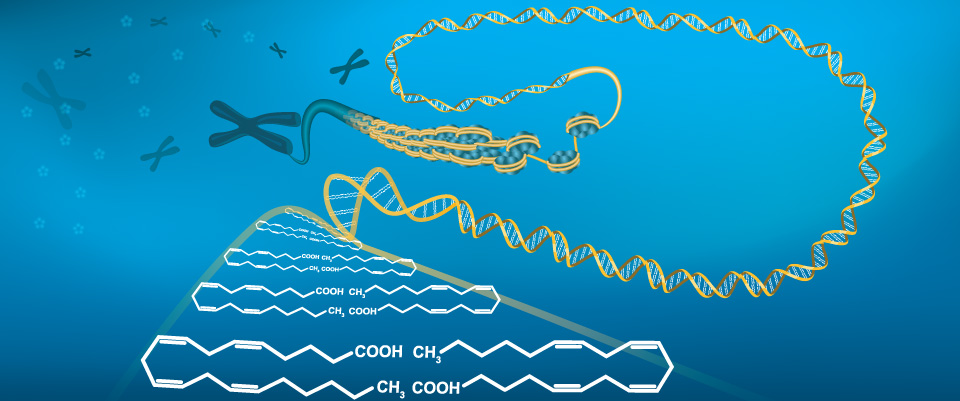PubMed
Assessment of flux through oleoresin biosynthesis in epithelial cells of loblolly pine resin ducts.
Related Articles
Assessment of flux through oleoresin biosynthesis in epithelial cells of loblolly pine resin ducts.
J Exp Bot. 2018 Oct 11;:
Authors: Turner GW, Parrish AN, Zager JJ, Fischedick JT, Lange BM
Abstract
The shoot system of pines contains abundant resin ducts, which harbor oleoresins that play important roles in constitutive and inducible defenses. In a pilot study, we assessed the chemical diversity of oleoresins obtained from mature tissues of loblolly pine trees (Pinus taeda L.). Building on these data sets, we designed experiments to assess oleoresin biosynthesis in needles of 2-year-old saplings. Comparative transcriptome analyses of single cell types indicated that genes involved in the biosynthesis of oleoresins are significantly enriched in isolated epithelial cells of resin ducts, compared with those expressed in mesophyll cells. Simulations using newly developed genome-scale models of epithelial and mesophyll cells, which incorporate our data on oleoresin yield and composition as well as gene expression patterns, predicted that heterotrophic metabolism in epithelial cells involves enhanced levels of oxidative phosphorylation and fermentation (providing redox and energy equivalents). Furthermore, flux was predicted to be more evenly distributed across the metabolic network of mesophyll cells, which, in contrast to epithelial cells, do not synthesize high levels of specialized metabolites. Our findings provide novel insights into the remarkable specialization of metabolism in epithelial cells.
PMID: 30312429 [PubMed - as supplied by publisher]
Characterising the plasma metabolome during 14 days live high, train low simulated altitude: A metabolomic approach.
Related Articles
Characterising the plasma metabolome during 14 days live high, train low simulated altitude: A metabolomic approach.
Exp Physiol. 2018 Oct 12;:
Authors: Lawler NG, Abbiss CR, Gummer JP, Broadhurst DI, Govus AD, Fairchild TJ, Thompson KG, Garvican-Lewis LA, Gore CJ, Maker GL, Trengove RD, Peiffer JJ
Abstract
NEW FINDING: What is the central question of this study? To determine how 14 days of LHTL at simulated altitude alters an individual's metabolomic/metabolic profile? What is the main finding and its importance? This study demonstrated that ∼200 h of moderate simulated altitude exposure showed greater variance in measured metabolites between-person compared to within-person, which indicates individual variability during the adaptive phase to altitude exposure. In addition, metabolomics results indicate altitude alters multiple metabolic pathways of which the time course of these pathways is different over 14 days of altitude exposure. These findings support previous literature and provide new information into the acute adaptation response to altitude.
ABSTRACT: Purpose The purpose of this study was to determine the influence of 14 days of normobaric hypoxic altitude exposure at 3000 m on the human plasma metabolomic profile. Methods Over 14 days, ten well trained endurance runners (six males, four females; 29 ± 7 y) lived at 3000 m simulated altitude, accumulating 196.4 ± 25.6 h of hypoxic exposure, and trained at ∼600 m. Resting plasma samples were collected at baseline, day 3 and day 14 of altitude exposure and stored at -80 °C. Plasma samples were analysed using liquid chromatography-high resolution mass spectrometry (LC-HRMS) to construct a metabolite profile of altitude exposure. Results Mass spectrometry of plasma identified 36 metabolites, of which eight were statistically significant (pFDR 0.1) from baseline to either day 3 or day 14. Specifically, changes in plasma metabolites relating to amino acid metabolism (tyrosine and proline), glycolysis (adenosine) and purine metabolism (adenosine) were observed during altitude exposure. Principal component canonical variate analysis showed significant discrimination between group means (p < 0.05) with canonical variate (CV) 1 describing non-linear recovery trajectory from baseline to day 3 and then back to baseline by day 14. Conversely, CV2 described a weaker non-recovery trajectory and increase from baseline to day 3, with a further increase from day 3 to day 14. Conclusion The current study demonstrates that metabolomics can be a useful tool to monitor metabolic changes associated with altitude exposure. Furthermore, it is apparent that altitude exposure alters multiple metabolic pathways, and the time course of these changes is different over 14 days of altitude exposure. This article is protected by copyright. All rights reserved.
PMID: 30311980 [PubMed - as supplied by publisher]
In vivo toxicology of carbon dots by 1H NMR-based metabolomics.
Related Articles
In vivo toxicology of carbon dots by 1H NMR-based metabolomics.
Toxicol Res (Camb). 2018 Sep 01;7(5):834-847
Authors: Hong W, Liu Y, Li MH, Xing YX, Chen T, Fu YH, Jiang L, Zhao H, Jia AQ, Wang JS
Abstract
Owing to the promising applications of C-dots in biomedical engineering, concerns about their safety have drawn increasing attention recently. In this study, mice were intraperitoneally injected at different C-dot concentrations (0, 6.0, 12.0 and 24.0 mg kg-1) once every 2 days for 30 days. A 1H NMR-based metabolic approach supplemented with biochemical analysis and histopathology was used for the first time to explore the toxicity of C-dots in vivo. Histopathological inspection revealed that C-dots did not induce any obvious impairment in tissues. Biochemical assays showed no significant alterations of most measured biochemical parameters in tissues and serum, except for a slight reduction of the albumin level in serum as well as AChE activity in the liver and kidneys. Orthogonal signal correction-partial least squares-discriminant analysis (OSC-PLS-DA) of NMR profiles supplemented with correlation network analysis and SUS-plots disclosed that C-dots not only triggered the immune system but also disturbed the function of cell membranes as well as the normal liver clearance, indicating that the 1H NMR based metabolomics approach provided deep insights into the toxicity of C-dots in vivo and gained an advantage over traditional toxicological means, and should be helpful for the understanding of its toxic mechanism.
PMID: 30310661 [PubMed]
1H-NMR-based metabolic profiling of healthy individuals and high-resolution CT-classified phenotypes of COPD with treatment of tiotropium bromide.
Related Articles
1H-NMR-based metabolic profiling of healthy individuals and high-resolution CT-classified phenotypes of COPD with treatment of tiotropium bromide.
Int J Chron Obstruct Pulmon Dis. 2018;13:2985-2997
Authors: Tan LC, Yang WJ, Fu WP, Su P, Shu JK, Dai LM
Abstract
Background: Heterogeneity of COPD results in different therapeutic effects for different patients receiving the same treatment. COPD patients need to be individually treated according to their own characteristics. The purpose of this study was to explore the differences in different CT phenotypic COPD by molecular metabolites through the use of metabolomics.
Methods: According to the characteristics of CT imaging, 42 COPD patients were grouped into phenotype E (n=20) or phenotype M (n=24). Each COPD patient received tiotropium bromide powder for inhalation for a therapeutic period of 3 months. All subjects were assigned into phenotype E in pre-therapy (EB, n=20), phenotype E in post-therapy (EA, n=20), phenotype M in pre-therapy (MB, n=22), phenotype M in post-therapy (MA, n=22), or normal control (N, n=24). The method of metabolomics based on 1H nuclear magnetic resonance (1H-NMR) was used to compare the changes in serum metabolites between COPD patients and normal controls and between different phenotypes of COPD patients in pre- and post-therapy.
Results: Patients with COPD phenotype E responded better to tiotropium bromide than patients with COPD phenotype M in terms of pulmonary function and COPD assessment test scores. There were differences in metabolites in COPD patients vs normal control people. Differences were also observed between different COPD phenotypic patients receiving the treatment in comparison with those who did not receive treatment. The changes of metabolites involved lactate, phenylalanine, fructose, glycine, asparagine, citric acid, pyruvic acid, proline, acetone, ornithine, lipid, pyridoxine, maltose, betaine, lipoprotein, and so on. These identified metabolites covered the metabolic pathways of amino acids, carbohydrates, lipids, genetic materials, and vitamin.
Conclusion: The efficacy of tiotropium bromide on COPD phenotype E is better than that of phenotype M. Metabolites detected by 1H-NMR metabolomics have potentialities of differentiation of COPD and healthy people, discrimination of different COPD phenotypes, and giving insight into the individualized treatment of COPD.
PMID: 30310274 [PubMed - in process]
Hydroxyurea Treated β-Thalassemia Children Demonstrate a Shift in Metabolism Towards Healthy Pattern.
Related Articles
Hydroxyurea Treated β-Thalassemia Children Demonstrate a Shift in Metabolism Towards Healthy Pattern.
Sci Rep. 2018 Oct 11;8(1):15152
Authors: Iqbal A, Ansari SH, Parveen S, Khan IA, Siddiqui AJ, Musharraf SG
Abstract
Augmentation of fetal hemoglobin (HbF) production has been an enduring therapeutic objective in β-thalassemia patients for which hydroxyurea (HU) has largely been the drug of choice and the most cost-effective approach. A serum metabolomics study on 40 patients with β-thalassemia prior to and after administration of HU was done along with healthy controls. Treated patients were divided further into non-responders (NR), partial (PR) and good (GR) per their response. 25 metabolites that were altered before HU therapy at p ≤ 0.05 and fold change >2.0 in β-thalassemia patients; started reverting towards healthy group after HU treatment. A prediction model based on another set of 70 HU treated patients showed a good separation of GR from untreated β-thalassemia patients with an overall accuracy of 76.37%. Metabolic pathway analysis revealed that various important pathways that were disturbed in β-thalassemia were reverted after treatment with HU and among them linoleic acid pathway was most impactfully improved in HU treated patients which is a precursor of important signaling molecules. In conclusion, this study indicates that HU is a good treatment option for β-thalassemia patients because in addition to reducing blood transfusion burden it also ameliorates disease complications by shifting body metabolism towards normal.
PMID: 30310134 [PubMed - in process]
Sample management for clinical biochemistry assays: Are serum and plasma interchangeable specimens?
Related Articles
Sample management for clinical biochemistry assays: Are serum and plasma interchangeable specimens?
Crit Rev Clin Lab Sci. 2018 Oct 12;:1-21
Authors: Lima-Oliveira G, Monneret D, Guerber F, Guidi GC
Abstract
The constrained economic context leads laboratories to centralize their routine analyses on high-throughput platforms, to which blood collection tubes are sent from peripheral sampling sites that are sometimes distantly located. Providing biochemistry results as quickly as possible implies to consolidate the maximum number of tests on a minimum number of blood collection tubes, mainly serum tubes and/or tubes with anticoagulants. However, depending on the parameters and their pre-analytical conditions, the type of matrix - serum or plasma - may have a significant impact on results, which is often unknown or underestimated in clinical practice. Importantly, the matrix-related effects may be a limit to the consolidation of analyses on a single tube, and thus must be known by laboratory professionals. The purpose of the present critical review is to put forward the main differences between using serum and plasma samples on clinical biochemistry analyses, in order to sensitize laboratory managers to the need for standardization. To enrich the debate, we also provide an additional comparison of serum and plasma concentrations for approximately 30 biochemistry parameters. Properties, advantages, and disadvantages of serum and plasma are discussed from a pre-analytical standpoint - before, during, and after centrifugation - with an emphasis on the importance of temperature, delay, and transport conditions. Then, differences in results between these matrices are addressed for many classes of biochemistry markers, particularly proteins, enzymes, electrolytes, lipids, circulating nucleic acids, metabolomics markers, and therapeutic drugs. Finally, important key-points are proposed to help others choose the best sample matrix and guarantee quality of clinical biochemistry assays. Moreover, awareness of the implications of using serum and plasma samples on various parameters assayed in the laboratory is an important requirement to ensure reliable results and improve patient care.
PMID: 30309270 [PubMed - as supplied by publisher]
Utility of Integrated Analysis of Pharmacogenomics and Pharmacometabolomics in Early Phase Clinical Trial: A Case Study of a New Molecular Entity.
Related Articles
Utility of Integrated Analysis of Pharmacogenomics and Pharmacometabolomics in Early Phase Clinical Trial: A Case Study of a New Molecular Entity.
Genomics Inform. 2018 Sep;16(3):52-58
Authors: Oh J, Yi S, Gu N, Shin D, Yu KS, Yoon SH, Cho JY, Jang IJ
Abstract
In this report, we present a case study of how pharmacogenomics and pharmacometabolomics can be useful to characterize safety and pharmacokinetic profiles in early phase new drug development clinical trials. During conducting a first-in-human trial for a new molecular entity, we were able to determine the mechanism of dichotomized variability in plasma drug concentrations, which appeared closely related to adverse drug reactions (ADRs) through integrated omics analysis. The pharmacogenomics screening was performed from whole blood samples using the Affymetrix DMET (Drug-Metabolizing Enzymes and Transporters) Plus microarray, and confirmation of genetic variants was performed using real-time polymerase chain reaction. Metabolomics profiling was performed from plasma samples using liquid chromatography coupled with quadrupole time-of-flight mass spectrometry. A GSTM1 null polymorphism was identified in pharmacogenomics test and the drug concentrations was higher in GSTM1 null subjects than GSTM1 functional subjects. The apparent drug clearance was 13-fold lower in GSTM1 null subjects than GSTM1 functional subjects (p < 0.001). By metabolomics analysis, we identified that the study drug was metabolized by cysteinylglycine conjugation in GSTM functional subjects but those not in GSTM1 null subjects. The incidence rate and the severity of ADRs were higher in the GSTM1 null subjects than the GSTM1 functional subjects. Through the integrated omics analysis, we could understand the mechanism of inter-individual variability in drug exposure and in adverse response. In conclusion, integrated multi-omics analysis can be useful for elucidating the various characteristics of new drug candidates in early phase clinical trials.
PMID: 30309203 [PubMed]
Uptake and toxic effects of triphenyl phosphate on freshwater microalgae Chlorella vulgaris and Scenedesmus obliquus: Insights from untargeted metabolomics.
Related Articles
Uptake and toxic effects of triphenyl phosphate on freshwater microalgae Chlorella vulgaris and Scenedesmus obliquus: Insights from untargeted metabolomics.
Sci Total Environ. 2019 Feb 10;650(Pt 1):1239-1249
Authors: Wang L, Huang X, Lim DJ, Laserna AKC, Li SFY
Abstract
The flame retardant triphenyl phosphate (TPhP) has been widely detected in surface waters. Yet, little information is known regarding its impact on microalgae. We investigated the uptake and toxicity of TPhP on two freshwater microalgae Chlorella vulgaris (CV) and Scenedesmus obliquus (SO) after exposure to 10 μg/l-10 mg/l for 5 days. The presence of microalgae significantly enhanced TPhP degradation, with the final concentrations dropped to 5.5-35.1% of the original concentrations. Most of the medium TPhP were sorbed and transformed by microalgae in just one day. Growth of CV was inhibited in a concentration-dependent manner, whereas growth of SO were only inhibited significantly at 10 mg/l TPhP exposure. Mass spectrometry-based untargeted metabolomics revealed concentration- and species-dependent metabolic responses. Exposure to TPhP in CV resulted in enhanced respiration (increase of fumarate and malate) and osmoregulation (increase of sucrose and myo-inositol), synthesis of membrane lipids (accumulation of monogalactosyldiacylglycerol (MGDG) and digalactosyldiacylglycerol (DGDG), decrease of lysoglycerolipids, fatty acids, and glyceryl-glucoside). Exposure to TPhP in SO resulted in enhanced osmoregulation (increase of valine, proline, and raffinose) and lipolysis (decrease of MGDG, accumulation of fatty acids, lysophospholipids, and glycerol phosphate). Although chlorophyll a and b contents did not change significantly, decrease of chlorophyll derivatives was observed in both CV and SO at high exposure concentrations. Further bioassays confirmed that CV exhibited enhanced membrane integrity and decreased cellular reactive oxygen species (ROS) possibly as a defense strategy, whereas SO showed disruption of membrane integrity and induction of ROS at 10 mg/l exposure. This study demonstrated the potential of microalgae to remove TPhP in water, and offered new insights for the risk assessment of TPhP on freshwater microalgae using metabolomics.
PMID: 30308812 [PubMed - in process]
metabolomics; +28 new citations
28 new pubmed citations were retrieved for your search.
Click on the search hyperlink below to display the complete search results:
metabolomics
These pubmed results were generated on 2018/10/12PubMed comprises more than millions of citations for biomedical literature from MEDLINE, life science journals, and online books.
Citations may include links to full-text content from PubMed Central and publisher web sites.
metabolomics; +22 new citations
22 new pubmed citations were retrieved for your search.
Click on the search hyperlink below to display the complete search results:
metabolomics
These pubmed results were generated on 2018/10/10PubMed comprises more than millions of citations for biomedical literature from MEDLINE, life science journals, and online books.
Citations may include links to full-text content from PubMed Central and publisher web sites.
Assessing pH-dependent toxicity of fluoxetine in embryonic zebrafish using mass spectrometry-based metabolomics.
Assessing pH-dependent toxicity of fluoxetine in embryonic zebrafish using mass spectrometry-based metabolomics.
Sci Total Environ. 2018 Oct 01;650(Pt 2):2731-2741
Authors: Mishra P, Gong Z, Kelly BC
Abstract
While it is well known that fluoxetine is more toxic to aquatic organisms at high pH, the metabolic dysregulations related to observed pH-dependent effects are still poorly understood. In the present study, we utilized a gas chromatography mass spectrometry (GC-MS) based metabolomics approach to assess metabolomic profile changes in developing zebrafish embryos following exposure (2 hpf-96 hpf) to different concentrations of fluoxetine at three environmentally relevant pH values (7.0, 8.0, and 9.0). Multivariate data analyses and pathway analyses were used to assess metabolomic profile changes and elicit important biochemical information regarding pH-dependent toxicity of fluoxetine. Overall, the affected biochemical functions related to fluoxetine exposure included amino acid metabolism, energy metabolism, nitrogenous waste excretion and osmolyte functions. While fluoxetine exposure (56 μg/L, 70 μg/L and 500 μg/L) caused no significant changes at pH 7, 500 μg/L and 70 μg/L fluoxetine was differentiated from the controls at pH 8 and pH 9 respectively. Three, eight and seven metabolites were identified as the most adversely affected at pH 7, 8 and 9, respectively. The altered metabolites associated with fluoxetine toxicity at high pH included urea, glycine and d-glucose 6-phosphate. Exposure to 70 μg/L fluoxetine, did not cause significant metabolomic profile changes at pH 7, However, the results indicate that this exposure concentration at pH and 9 can cause significant metabolic dysregulation related to apoptosis and oxidative stress. Increasing aqueous pH progressively enhanced fluoxetine induced toxicity for the 70 μg/L exposure group. The observed impacts included higher energy consumption at pH 7, a breakdown of reserve energy to supplement energy demand at pH 8 and impaired lipid metabolism at pH 9. This study provides important information regarding molecular-level effects related to pH-dependent exposure of fluoxetine in embryonic zebrafish.
PMID: 30296778 [PubMed - as supplied by publisher]
Metabolomics reveals defensive mechanisms adapted by maize on exposure to high molecular weight polycyclic aromatic hydrocarbons.
Metabolomics reveals defensive mechanisms adapted by maize on exposure to high molecular weight polycyclic aromatic hydrocarbons.
Chemosphere. 2018 Oct 02;214:771-780
Authors: Sivaram AK, Subashchandrabose SR, Logeshwaran P, Lockington R, Naidu R, Megharaj M
Abstract
Polycyclic aromatic hydrocarbons are an important group of persistent organic pollutants. Using plants to remediate PAHs has been recognized as a cost-effective and environmentally friendly technique. However, the overall impact of PAHs on the regulation of plant metabolism has not yet been explored. In this study, we analyzed the alteration in the maize (Zea mays L.) metabolome on exposure to high molecular weight PAHs such as benzo[a]pyrene (BaP) and pyrene (PYR) in a hydroponic medium, individually and as a mixture (BaP + PYR) using GC-MS. The differences in the metabolites were analyzed using XCMS (an acronym for various forms (X) of chromatography-mass spectrometry), an online-based data analysis tool. A significant variation in metabolites was observed between treatment groups and the unspiked control group. The univariate, multivariate and pathway impact analysis showed there were more significant alterations in metabolic profiles between individual PAHs and the mixture of BaP and PYR. The marked changes in the metabolites of galactose metabolism and aminoacyl tRNA biosynthesis in PAHs treated maize leaves exhibit the adaptive defensive mechanisms for individual and PAHs mixture. Therefore, the metabolomics approach is essential for an understanding of the complex biochemical responses of plants to PAHs contaminants. This knowledge will shed new light in the field of phytoremediation, bio-monitoring, and environmental risk assessment.
PMID: 30296765 [PubMed - as supplied by publisher]
Vitamin D C3-epimer levels are proportionally higher with oral vitamin D supplementation compared to ultraviolet irradiation of skin in mice but not humans.
Vitamin D C3-epimer levels are proportionally higher with oral vitamin D supplementation compared to ultraviolet irradiation of skin in mice but not humans.
J Steroid Biochem Mol Biol. 2018 Oct 05;:
Authors: Ghaly S, Bliuc D, Centre J, Clarke MW, Jones AP, Trend S, Kermode AG, Neale RE, Hart PH
Abstract
A proportion of circulating 25-hydroxy vitamin D3 (25(OH)D3)) undergoes epimerization to form C3-epi 25(OH)D3 and C3-epi 1,25(OH)2D3. These epimers have less calcaemic activity than non-epimerized metabolites and are not differentiated by many immunoassays when reporting total 25(OH)D3 levels. This study aimed to compare the effect of exposure to ultraviolet radiation (UVR) and oral vitamin D3 supplementation on vitamin D C3-epimer levels. C57Bl/6 female mice were fed either vitamin D-sufficient (vitamin D3 2000 IU/kg) or -deficient diets (no vitamin D3) for 4 weeks. Among the vitamin D-deficient group, the shaved backs of half were irradiated daily for 4 days with 1 kJ/m2 UVR, followed by twice weekly irradiation for 4 weeks. Despite similar 25(OH)D3 levels, the UV-irradiated group had a lower proportion of C3-epi 25(OH)D3 at week 7 (p < 0.05) and week 9 (p < 0.01). C3-epimer concentrations and %C3-epi 25(OH)D3 were also analysed in serum samples from two human clinical trials. These trials investigated the effect of high dose oral vitamin D3 supplementation and narrowband UVB phototherapy, respectively. Serum 25(OH)D3 and the %C3-epi 25(OH)D3 levels measured at 12 months after oral vitamin D3 supplementation were not significantly different to those measured at the time of maximal effect of phototherapy (2 months). Thus, the proportion of 25(OH)D3 that undergoes epimerization is greater with oral vitamin D3 supplementation than exposure to UVR in mice, but not in humans. This important difference between human and murine vitamin D metabolism warrants consideration when interpreting animal studies.
PMID: 30296587 [PubMed - as supplied by publisher]
Plasma metabolomic profiling distinguishes right-sided from left-sided colon cancer.
Plasma metabolomic profiling distinguishes right-sided from left-sided colon cancer.
Clin Chim Acta. 2018 Oct 05;:
Authors: Deng K, Han P, Song W, Wang Z, Zhang F, Xie H, Zhao W, Xu H, Cai Y, Rong Z, Yu X, Cui BB, Li K
Abstract
BACKGROUND: Many studies have demonstrated that right-sided colon cancer (RCC) has a higher mortality rate and worse prognosis than left-sided colon cancer (LCC). However, the underlying biological mechanism that can account for these differences is unclear.
METHODS: In this study, plasma metabolic profiles in 147 LCC patients and 105 RCC patients were systematically analyzed by the ultra high performance liquid chromatography quadruple time-of-flight mass spectrometry (UHPLC-QTOF/MS) platform in conjunction with univariate and multivariate statistical analysis.
RESULTS: Metabolic signatures revealed considerable differences between patients with RCC and LCC, and clear separations were observed between the two groups in partial least-squares discriminant analysis score plots. In total, six metabolites were identified as potential metabolite markers for tumor location in RCC compared with LCC, including upregulated trimethylamine N-oxide and indoxyl sulfate, and downregulated anserine, L-targinine, gamma-glutamyl-gamma-aminobutyraldehyde and pyridoxal 5'-phosphate. These differences highlight that significant alternations occur in the pathways of methane metabolism, arginine and proline metabolism, histidine metabolism, beta-alanine metabolism and vitamin B6 metabolism in RCC compared with LCC.
CONCLUSIONS: Identified biomarkers and metabolic pathways may facilate our understanding of the different mortality rates and prognoses between RCC and LCC.
PMID: 30296444 [PubMed - as supplied by publisher]
Quantification of phenolic acid metabolites in humans by LC-MS: a structural and targeted metabolomics approach.
Quantification of phenolic acid metabolites in humans by LC-MS: a structural and targeted metabolomics approach.
Bioanalysis. 2018 Oct;10(19):1591-1608
Authors: Obrenovich ME, Donskey CJ, Schiefer IT, Bongiovanni R, Li L, Jaskiw GE
Abstract
AIM: Co-metabolism between a human host and the gastrointestinal microbiota generates many small phenolic molecules such as 3-hydroxy-3-(3-hydroxyphenyl)propanoic acid (3,3-HPHPA), which are reported to be elevated in schizophrenia and autism. Characterization of these chemicals, however, has been limited by analytic challenges.
METHODOLOGY/RESULTS: We applied HPLC to separate and quantify over 50 analytes, including multiple structural isomers of 3,3-HPHPA in human cerebrospinal fluid, serum and urine. Confirmation of identity was provided by NMR, by MS and other detection methods. The highly selective methods support rapid quantification of multiple metabolites and exhibit superior chromatographic behavior.
CONCLUSION: An improved ultra-HPLC-MS/MS and structural approaches can accurately quantify 3,3-HPHPA and related analytes in human biological matrices.
PMID: 30295550 [PubMed - in process]
Incorporating in-source fragment information improves metabolite identification accuracy in untargeted LC-MS datasets.
Incorporating in-source fragment information improves metabolite identification accuracy in untargeted LC-MS datasets.
J Proteome Res. 2018 Oct 08;:
Authors: Seitzer PM, Searle BC
Abstract
In-source fragmentation occurs as a byproduct of electrospray ionization. We find that ions produced as a result of in-source fragmentation often match fragment ions produced during MS/MS fragmentation and we take advantage of this phenomenon in a novel algorithm to analyze LC-MS metabolomics datasets. Our approach organizes co-eluting MS1 features into a single peak group and then identifies in-source fragments among co-eluting features using MS/MS spectral libraries. We tested our approach using previously published data of verified metabolites, and compared the results to features detected by other mainstream metabolomics tools. Our results indicate that considering in-source fragment information as a part of the identification process increases annotation quality, allowing us to leverage MS/MS data in spectrum libraries even if MS/MS scans were not collected.
PMID: 30295490 [PubMed - as supplied by publisher]
[Metabolomic Profiling of Patients With Cardiovascular Diseases].
[Metabolomic Profiling of Patients With Cardiovascular Diseases].
Kardiologiia. 2018 Sep;(9):59-62
Authors: Belenkov YN, Privalova EV, Kozhevnikova MV, Korobkova EO, Ilgisonis IS, Kaplunova VY, SHakaryants GA, Appolonova SA, Kuharenko AV, Larcova EV, Mesonzhik NV
Abstract
Cardiovascular diseases (CVD) are the main cause of death worldwide. A broad study of the pathogenetic mechanisms of the CVD onset and progression has led to understanding of the importance of endothelial dysfunction (ED) in these processes. During recent years intensive work has been conducted in the direction of searching for markers of ED. Metabolomics is an intensively advancing approach to early diagnostics of diseases. Metabolomic analysis based on mass spectrometry allows to study complete metabolic profiles and their deviations resulting from changes in expression of genes and RNA, protein activity, or environmental factors. Metabolomic analysis has already demonstrated significant results in the solving of different scientific and clinical problems. It appears to be a promising method for detecting early biomarkers of CVD. Various aspects of application of metabolomic profiling in the field of cardiovascular diseases are discussed in this article.
PMID: 30295200 [PubMed - in process]
Utilization of Analytical Omics Tools in the Molecular Diagnostics of Multiple Myeloma.
Utilization of Analytical Omics Tools in the Molecular Diagnostics of Multiple Myeloma.
Curr Mol Med. 2018 Oct 08;:
Authors: Kovacs Z, Guttman A
Abstract
Multiple myeloma (MM) is characterized as the clonal proliferation of malignant plasma B-lymphocytes and even as of today, it is an incurable disease. MM accounts for approximately 10% of all hematologic cancers. Its molecular pathogenesis is poorly understood, but the bone marrow microenvironment of tumor cells and genetic factors have apparent roles in the process. Accurate diagnosis is important to properly identify and stratify the disease, however, MM identification steps are time-consuming and expensive. Thus, development of early molecular diagnostic methods are of high importance in order to start proper therapies as early in the disease progression as possible, given the nature of the poor survival rates/remission periods. Molecular diagnostics via analytical omics represents one of the promising toolsets to speed up the diagnostic process. In this paper, we critically review the utilization of state of the art, high sensitivity analytical omics approaches (genomics, proteomics, metabolomics, lipidomics and glycomics) in MM diagnostics at the molecular level.
PMID: 30295190 [PubMed - as supplied by publisher]
Metabolomics of exhaled breath condensate by nuclear magnetic resonance spectroscopy and mass spectrometry: a methodological approach.
Metabolomics of exhaled breath condensate by nuclear magnetic resonance spectroscopy and mass spectrometry: a methodological approach.
Curr Med Chem. 2018 Oct 08;:
Authors: Maniscalco M, Cutignano A, Paris D, Melck DJ, Molino A, Fuschillo S, Motta A
Abstract
Respiratory diseases present a very high prevalence in the general population, with an increase in morbidity, mortality and health-care expenses worldwide. They are complex and heterogeneous pathologies that may present different pathological facets in different subjects, often with personal evolution. Therefore, there is a need to identify patients with similar characteristics, prognosis or treatment, defining the so-called phenotype, but also to mark specific differences within each phenotype, defining the endotypes. Biomarkers are very useful to study respiratory phenotypes and endotypes. Metabolomics, one of the recently introduced "omics", is becoming a leading technique for biomarker discovery. For the airways, metabolomics appears to be well suited as the respiratory tract offers a natural matrix, the exhaled breath condensate (EBC), in which several biomarkers can be measured. In this review, we will discuss the main methodological issues related to the application of nuclear magnetic resonance (NMR) spectroscopy and mass spectrometry (MS) to EBC metabolomics for investigating respiratory diseases.
PMID: 30295185 [PubMed - as supplied by publisher]
The impact of culture conditions on growth and metabolomic profiles of freshwater cyanobacteria.
Related Articles
The impact of culture conditions on growth and metabolomic profiles of freshwater cyanobacteria.
J Appl Phycol. 2018 Feb;30(1):375-384
Authors: Crnkovic CM, May DS, Orjala J
Abstract
Cultured cyanobacteria produce secondary metabolites with a wide range of biological activities and are an important source of natural products. In the context of secondary metabolite discovery, microbial culture conditions are expected to support optimum growth, induce maximum chemical diversity, and be suitable for the majority of cyanobacterial strains. We investigated the effect of nitrate and phosphate on biomass production and metabolomic profiles of three filamentous freshwater cyanobacterial strains: cf. Oscillatoria sp. UIC 10045, Scytonema sp. UIC 10036, and Nostoc sp. UIC 10110. A standardized inoculation procedure allowed for the assessment of cell mass production. Dried cyanobacterial cell mass was extracted and analyzed by liquid chromatography coupled with high resolution mass spectrometry (UPLC-HRMS), followed by comparative metabolomics analysis using XCMS Online. Results showed that low nitrate media significantly reduced cell mass production for all three strains. Low nitrate also induced production of primary metabolites (heterocyst glycolipids) in strains UIC 10036 and UIC 10110. Changes in phosphate levels affected each strain differently. Strain UIC 10110 showed a significant increase in production of merocyclophane C when cultivated in low phosphate, while strain UIC 10036 displayed higher production of tolytoxin under high phosphate. Additionally, these experiments led to the identification of a potentially new peptide produced by strain UIC 10036.
PMID: 30294068 [PubMed]











